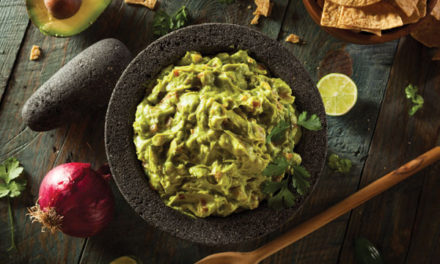The Apex to Healthy Eating
When you think of vegetable gardens, your mind may begin playing a black-and-white film reel of pearl-wearing housewives in the backyard, pulling away the weeds of American topsoil as their husbands are off at war. The times have changed, but gardening has become even more important today than it was in the 1940s. Our nation may not be suffering from a lack of imports, but our internal problems with GMOs and chemically-farmed produce have made organic gardening become a near necessity.
Today, most of American produce is treated with pesticides, and 60 percent of all pesticides are carcinogenic. Because pesticides are poisons created to kill living organisms, they can result in harmful effects in humans. Growing your own produce is the safest way to control what is going into your food, and it keeps you free from those nasty chemicals to make sure that you and your veggies remain pure and healthy.However, let’s not resort to recreating your grandmother’s vegetable garden. Gone are the days of growing upside down tomato plants and watering your cucumber vines in aprons and gloves. Between your work schedule, workout routine, and daily activities, you need homegrown veggies that will sustain you with whatever life throws your way—and you’d be surprised: the most unique, healthy vegetables are not difficult to garden yourself. With choice veggies, an extravagant garden is not only a blissful possibility, but a healthful lifestyle improvement that can become your family’s reality.
The key to getting the most out of your garden is choosing the right vegetables based on nutritional impact. Rather than opting for the usual carrot or cabbage plants, take your time researching vegetables based on nutrition rather than convenience. With vitamin-rich veggies, your backyard produce paradise will give a whole new meaning to the term “victory garden.” Here are some of our favorite choices for making other backyard gardens green with envy.
Microgreens
Going all-out with greens is one of the most popular trends in the diet world today, but gardening your own greens is the best way to ensure that you are harvesting them at their peak time for optimal health benefits. Scientists have confirmed that greens and herbs harvested within the first 14 days of their growth cycle have a greater concentration of vitamins and minerals than greens and herbs that are harvested at their fully ripe state. These young greens—called microgreens—are simple to grow: all that is needed is a thin layer of garden soil and regular water and sun exposure.
Beets
They may have gotten a sour reputation over the decades, but beets are a delicious and colorful way to fill your diet with a boost of vitamins. This purple beauty is even known as “nature’s multivitamin” and, when eaten regularly, can keep the common cold at bay and reduce the risk of cancer. Also, growing your own beets allows you to enjoy not just the edible root, but the leaves as well, which are packed with nutritional benefits. To add some jewel-toned excitement to a homemade salad, choose to nurture a variety of beets, from Golden and Chioggia to Bull’s Blood.
Kale
If you have kale plants in your garden, everyone will know you mean business when it comes to gardening. Kale is king of the greens. This powerhouse veggie does it all, from absorbing free radicals, which helps prevent diabetes, Alzheimer’s, and rheumatoid arthritis, to loading up your immune system with protection from Vitamin C. If the bitterness is a bit rough for you, try Lacinato kale, also known as Dinosaur or Tuscan kale. This sweet, mild version is a delicious alternative to regular kale.
Quinoa
Even though we’re talking about a garden, that doesn’t mean we have to forget about protein. Quinoa is one of the best vegan sources of protein, and because it is a grain, it is full of fiber as well. What better way to fill your need for fiber than with energy-packed whole grains straight from your backyard? Don’t let the exotic nature of this grain fool you; although this South American treasure is comfortable below the equator, it grows perfectly in home gardens.
Chia
Liven up your garden with this energy-boosting superfood that serves a variety of purposes in the kitchen. Popular for their high levels of omega-3 fatty acids, Chia seeds have been known to stabilize blood sugar and lower cholesterol, while keeping you satisfied throughout the day. These little wonders are perfect in salads, smoothies, and anything in between, or added to your favorite trail mix and even eaten raw. For best results, soak your Chia seeds after harvesting to stimulate the nutritional content.







